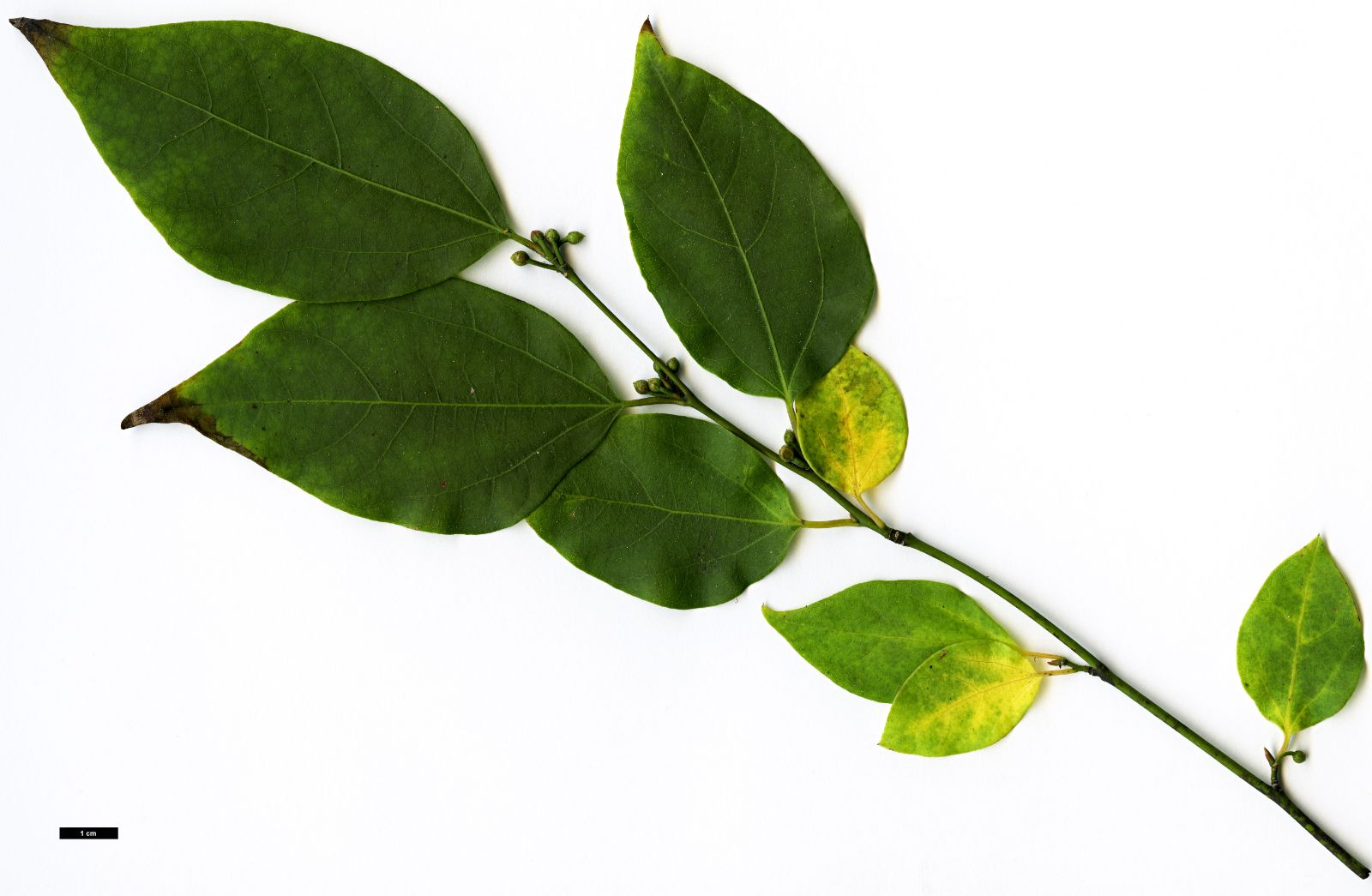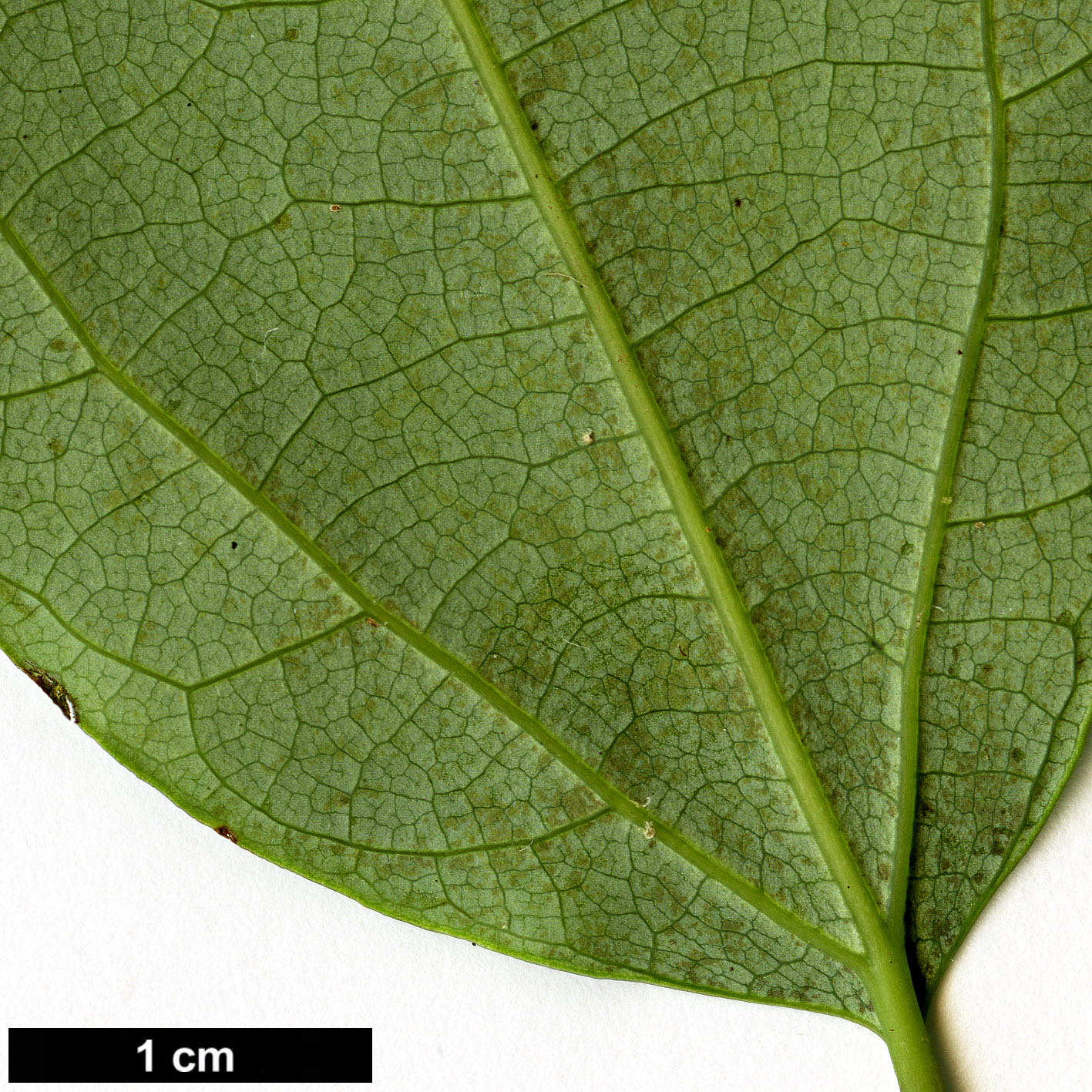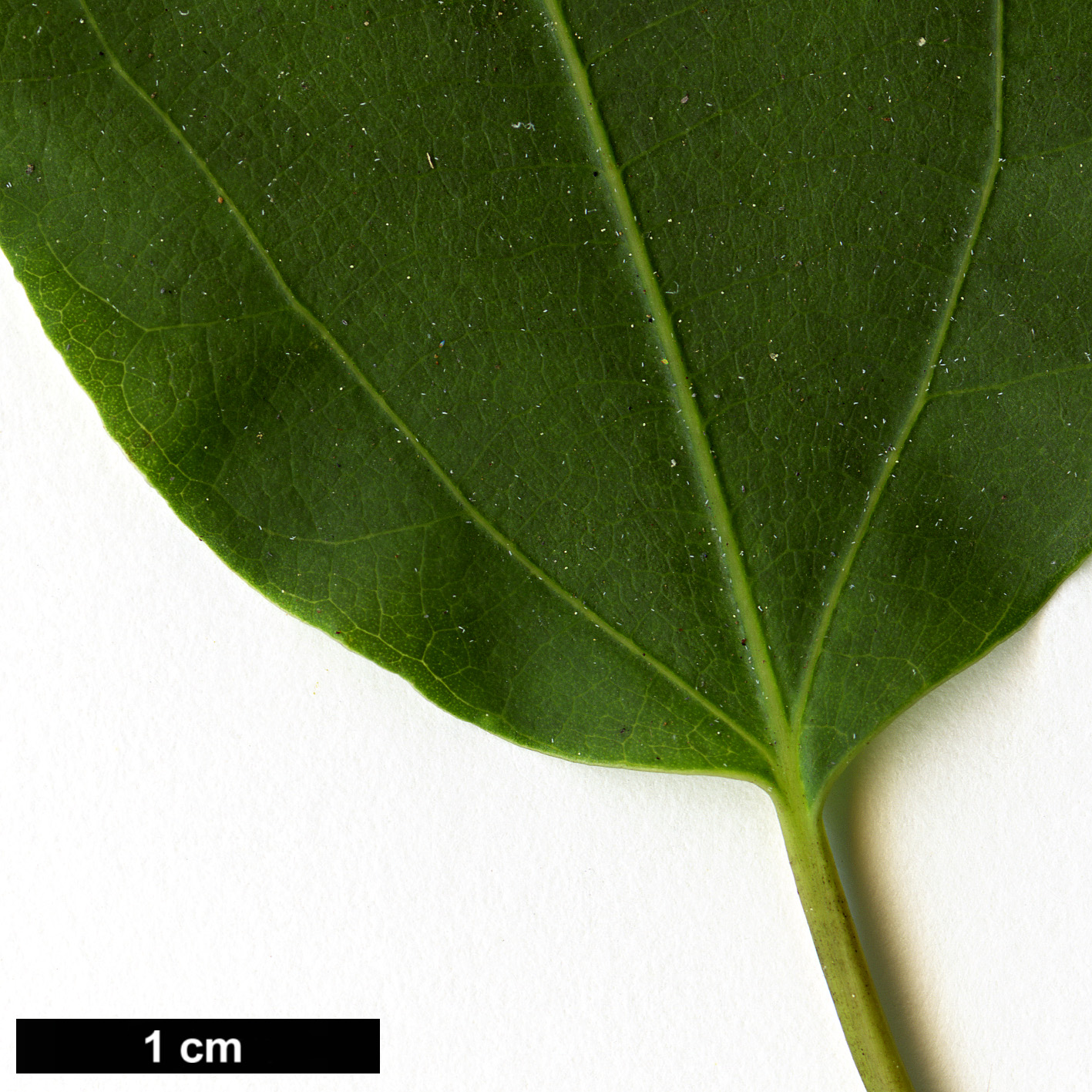Lindera neesiana
Sponsor
Kindly sponsored by
a member of the International Dendrology Society
Credits
Julian Sutton (2023)
Recommended citation
Sutton, J. (2023), 'Lindera neesiana' from the website Trees and Shrubs Online (treesandshrubsonline.
Genus
Synonyms
- Benzoin neesianum Wall. ex Nees
Other taxa in genus
- Lindera aggregata
- Lindera akoensis
- Lindera angustifolia
- Lindera assamica
- Lindera benzoin
- Lindera chienii
- Lindera communis
- Lindera erythrocarpa
- Lindera floribunda
- Lindera fragrans
- Lindera glauca
- Lindera megaphylla
- Lindera melissifolia
- Lindera metcalfiana
- Lindera obtusiloba
- Lindera praecox
- Lindera pulcherrima
- Lindera reflexa
- Lindera rubronervia
- Lindera sericea
- Lindera tonkinensis
- Lindera triloba
- Lindera umbellata
Deciduous shrub or tree to 12 m. Bark green or green-brown. Young branchlets green or yellowish. Winter buds ovoid. Leaves trinerved or triplinerved; blade membranous, ovate, 5–14 × 2.5–8 cm, glabrous above, densely pubescent beneath at first; base rounded to broadly cuneate; margin entire; apex acuminate; petiole 1–1.2 cm. Umbels with 4 involucral bracts and 7–9 flowers; peduncules distinct, longer than 3 mm. Flowers yellow to green; male flowers with 9 fertile stamens, female flowers with nine reduced, fasciated staminodes. Fruit subglobose, 0.6–0.8 cm across, red. Flowering April, fruiting September (China). (Cui & van der Werff 2008; Chinese Academy of Sciences 2023).
Distribution Bhutan Myanmar N China Anhui, Guizhou, Henan, Hubei, Hunan, Jiangxi, Shaanxi, Sichuan, Xizang, Yunnan, Zhejiang India Nepal
Habitat Mountain slopes, roadsides, forests, forest margins, valleys, thickets; below 2500 m asl in China, to over 3300 m on the India/Nepal border.
USDA Hardiness Zone 8-9
RHS Hardiness Rating H4
Conservation status Least concern (LC)
This little-known shrub has a mere toehold on western cultivation. The small, yellowish flowers are borne before the leaves emerge (Chinese Academy of Sciences 2023). With a wide range from Indo-china to the Himalaya, hardiness is likely to vary.
Among the tri- or triplinerved deciduous species we list, Lindera neesiana can be distinguished from L. obtusiloba and L. triloba by its more or less ovate leaves, paler beneath, never lobed, with acuminate apices. L. rubronervia is much harder to distinguish, and almost as rare in gardens. Flora of China (Cui & van der Werff 2008) suggests that L. neesiana has tri- or triplinerved leaves (versus triplinerved in L. rubronervia) and distinctly pedunculate umbels (cf. peduncles less than 3 mm). Large numbers of images identified as these species on the Plantplus website (Chinese Academy of Sciences 2023) give no support to the peduncle-length distinction, but make clear the difference in veining; the two main lateral veins usually meet the midvein at or very near the lamina base in L. neesiana, but well away from the base in L. rubronervia. Further careful study of the plants we have is required.
Although it may be more widely grown in the American Southeast, in our area we have only been able to trace a few plants. Examples at the US National Arboretum, Washington, DC, include one from the collection QLG 155 (NACPEC 1996, Qinling Mountains, Shaanxi – US National Arboretum 2023). Material from QLG 155 is also grown at the Morris Arboretum, PA (Jan De Langhe, pers. comm. 2023). Two Crûg Farm collections (BSWJ 13983 & 13984) made from small trees on the descent from the Singalila Ridge, West Bengal in 2013 have been variously identified as L. neesiana and L. assamica (Meisn.) Kurz (Crûg Farm Plants 2018; 2023). Both are known in this part of India, but a plant from BSWJ 13984 grown for a while at Bonn University Botanic Garden, Germany, has been positively identified as L. assamica (with pinnately veined leaves with distinctively raised reticulate veins beneath) by Jan De Langhe (pers. comm. 2023 – see images under L. assamica). We have not yet seen material from BSWJ 13983.




